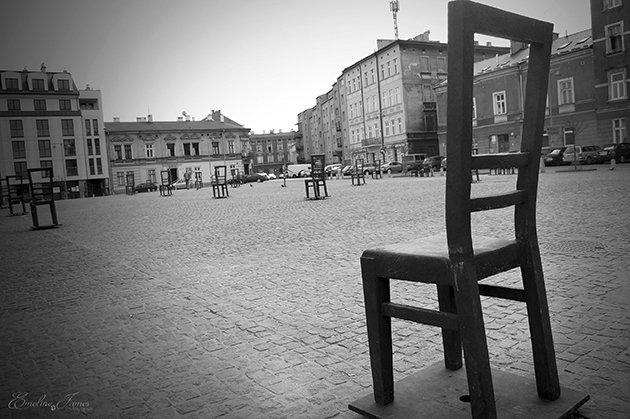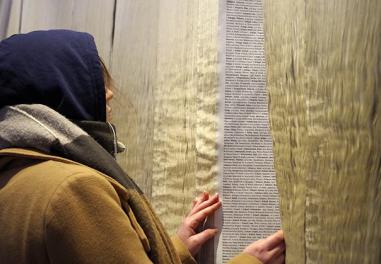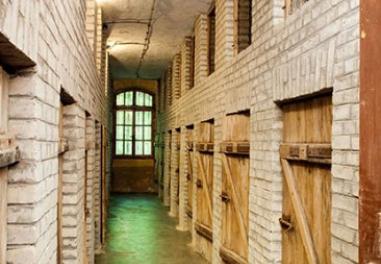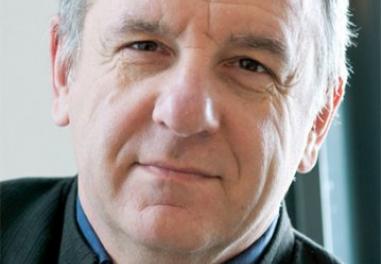In the footsteps of la deportation
In February, 50 final-year students of the Lycée de la Communication in Metz travelled to Nuremberg, Prague, Krakow and Auschwitz. Five of them tell us about their journey of remembrance of deportation.

We have all seen films, read books and imagined the horrors which deportees must have suffered during the Second World War; but seeing the places with our own teenage eyes gave us a different feeling, stronger and more profound. Most of us wanted to go on the trip to visit the Auschwitz camp. To see, find out and understand, and to honour the victims.
Going as a group was a further motivation. To the question, “Could you visit Auschwitz with your family during the holidays?”, we all answered “no”. Why? Auschwitz is definitely not a tourism site. It is first and foremost a site of remembrance and contemplation. We needed teachers with us, to provide the necessary explanations. Going in a group also meant that we could share our impressions.
VESTIGES OF THE JEWISH PRESENCE IN CENTRAL EUROPE
First we visited the building that was intended to host the Nazi congresses in Nuremberg. Then we headed for Prague, in the Czech Republic, to see the Jewish quarter and its many synagogues, each one different. One of them made more of an impression on us than the rest. The interior walls of the Pinkas synagogue were covered with the names of the 77 297 Czech Jews who were massacred during the Second World War. The first floor had an exhibition of drawings by children deported to Teresin between 1942 and 1944. It was captivating to see a child’s innocence through drawings representing the horrors of war.
The following day, we visited the Jewish ghetto in Krakow. There had been a Jewish settlement there since the late 15th century. When the Germans occupied Poland, they decided in March 1941 to move residents to another ghetto, surrounded by walls, where living conditions were very harsh. There, people were split into two categories: those unfit for work, who were the first to be executed; and those fit to work, who were given a pass.
What struck us when we entered the old ghetto, this “prison” with natural boundaries marked out by rivers and rocks, were the sections of wall built by the Nazis in the shape of tombstones: a way of telling the inhabitants they wouldn’t get out alive. We learnt how some showed tremendous courage and humanity, like the pharmacist Pankiewicz, who wasn’t Jewish but stayed in the ghetto to save lives. This included hiding several children in his office.
Today, in Ghetto Heroes Square, is a commemorative monument consisting of 68 empty chairs, in memory of the 68 000 Jews of the ghetto who died.
“GROUND STEEPED IN HISTORY”
The last day of our school trip to Central Europe would take us to Auschwitz I and Auschwitz II (Birkenau). We learn about Auschwitz from primary school age, which is probably why it has a mythical aura for our generation. We left Krakow early in the morning. The hour’s bus ride gave us time to reflect on what we were about to see. Some were afraid of how they would react; others couldn’t wait to satisfy their curiosity. For some of us, reading the closing pages of Primo Levi’s account prepared us for what lay in store 40 miles away.
From the moment we arrived and stepped out of the coach, we understood that we were treading on ground steeped in history. The mood was as cold as the temperature. We entered equipped with headsets to listen to the guide’s commentary. Her soft voice seemed to attenuate the horrors of which she spoke. We passed the sign saying “Arbeit macht frei” and entered the camp.
Our guide showed us around, block by block. In one of them is a quote from Winston Churchill - “Those who fail to learn from history are doomed to repeat it” - which takes on its full meaning in this setting. As we moved from one building to the next, the sight of saucepans, suitcases, clothes, portraits, glasses, combs and hair enabled us to picture the scale of the genocide. Inside one of the rooms was a pile of canisters of Zyklon B, the cyanide-based chemical used for extermination in the gas chambers. Further on, a gigantic book listed all those killed in the Holocaust: four million identified by name, out of a total of approximately six million dead. Some of our party couldn’t resist flicking through the pages of this immense tome, in search of a relative or a name they knew.
THE VASTNESS OF BIRKENAU
Auschwitz I seemed vast enough to us; we weren’t prepared for the sight of the second camp (Auschwitz II or Birkenau), which was approximately 30 times bigger. Unlike Auschwitz I, Birkenau was built entirely from scratch during the war, mostly by deportees themselves. The notorious watchtower at the camp’s entrance was not built until 1944. Upon entering, the first thing you are struck by is the sheer vastness of the place. It seems never-ending. The brick huts on the left were for the women, the ones on the right for the men. The reconstruction of beds and latrines enables you to imagine the horrendous living conditions of the deportees. The tour involved a lot of walking. But there was no question of complaining, because 70 years earlier it was not students in search of knowledge like us who trod this ground, but starving, exhausted, dehumanised deportees. At the other end of the camp, the perspective is inverted: from there, you can no longer see the watchtower. Near the forest, we saw the gas chambers and crematoriums in ruins. Further on, the disinfection building still stands. A hundred personal photos of Jewish victims are displayed there. A fresh, white flower had been laid on one of them, doubtless by a family member.
Towards the end of the tour, we stopped before a memorial, beneath which ashes are buried. Spontaneously, we observed a minute’s silence. It was such a powerful moment that we forgot about the cold. Then we went on our way: on our left, the unfinished extension to the camp was further evidence of the Nazis’ grim design. In the pin-dropping silence of that late afternoon, our heads buzzed with a thousand thoughts.
Read more
Articles of the review
-
The file

Young reporters of remembrance
Henri Borlant was the only Jewish child under 16 who was arrested in 1942 to escape from Auschwitz. Deported in July, he survived three years in the death camp. On his return, he became a doctor. When Les Chemins de la Mémoire invited him to meet with students of the Metz Lycée de la Commu...Read more -
The figure

Le Fort de Queuleu
Following on from their Eastern European remembrance trip, the students from Metz visited the former internment and transit camp at Queuleu. It was an opportunity for them to see where European history meets the history of their region and of the Resistance fighters who were arrested there.
Read more -
The interview

Denis Peschanski
Head of research at the CNRS and a specialist in Second World War history and remembrance, Denis Peschanski spoke at a conference at Metz high school on the mechanisms for the construction of collective memory.
Read more

